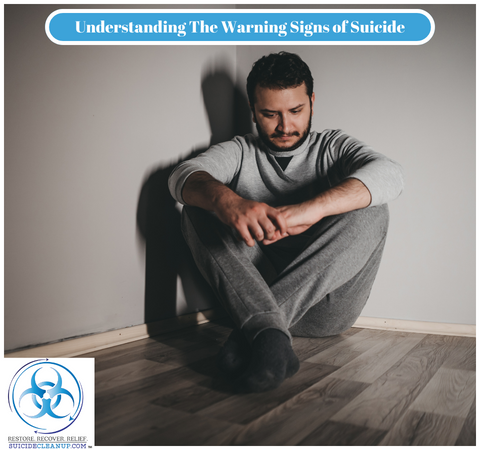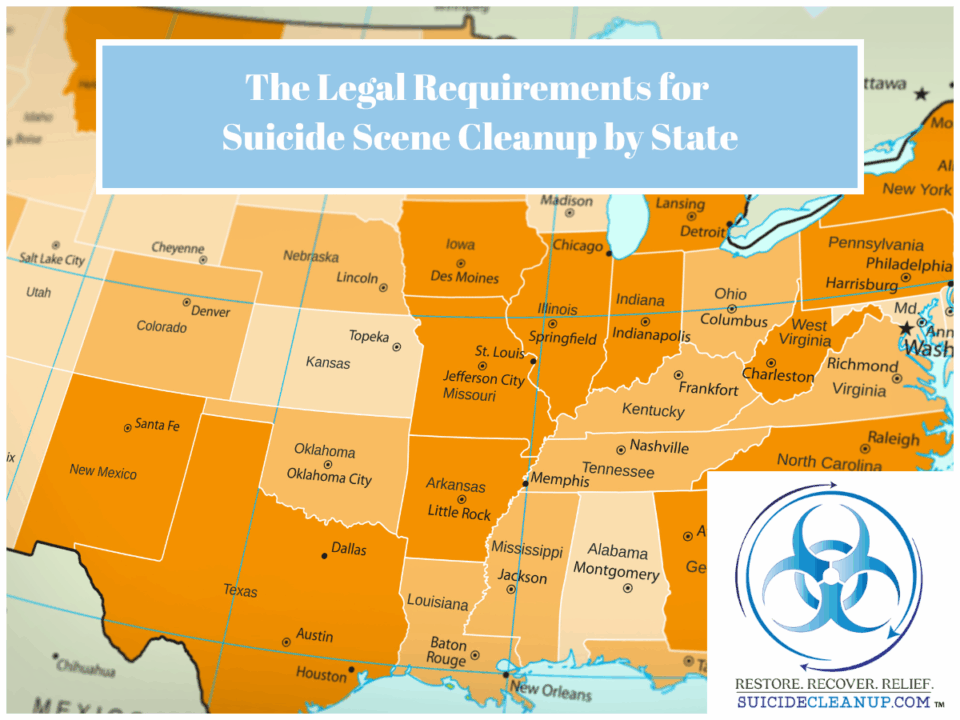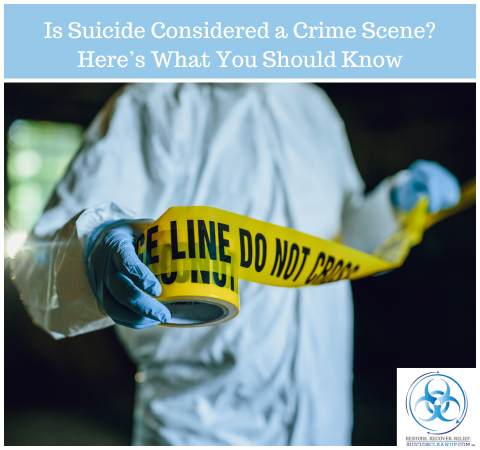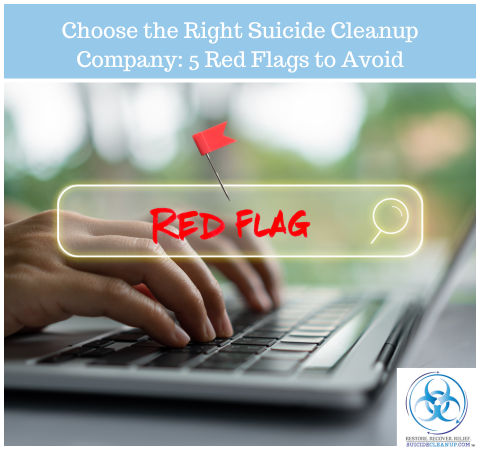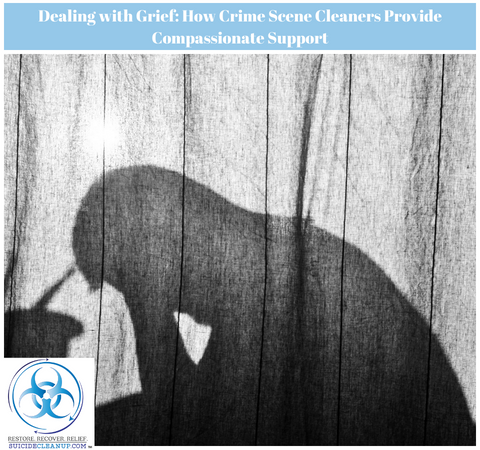
Dealing with Grief: How Crime Scene Cleaners Provide Compassionate Support
January 12, 2024
The Future of Mental Health: Technology’s Role in Preventing Suicide
March 21, 2024In a world where mental health awareness is increasingly crucial, understanding the warning signs of suicide is paramount. According to the CDC there were approximately 49,449 suicides deaths in the year of 2022. Every year, countless lives are lost to suicide, leaving behind devastation and heartache for loved ones. Recognizing these signs can be the first step in intervening and potentially saving a life. At SuicideCleanup.com, we understand the profound impact of suicide, not only on individuals and families but also on communities.
As specialists in crime scene cleanup and bioremediation, we witness firsthand the aftermath of these tragic events. Through this blog post, we aim to shed light on the warning signs of suicide, emphasizing the importance of early detection and intervention in preventing further loss. Join us in this vital discussion as we explore the indicators that may signal someone is in distress and in need of support. Together, we can work towards creating a safer and more compassionate environment for those struggling with mental health challenges.
Recognizing the Emotional Warning Signs of Suicide
Some of the emotional warning signs of suicide include:
- Suicidal Thoughts
- Depression Symptoms
- Overwhelming Hopelessness
- Extreme Mood Swings
Suicidal thoughts, often accompanied by feelings of despair and worthlessness, can manifest as a persistent preoccupation with death or a desire to escape unbearable pain. Additionally, symptoms of depression such as profound sadness, loss of interest in activities once enjoyed, and changes in appetite or sleep patterns can signal a deeper emotional struggle. Overwhelming hopelessness, a pervasive sense that things will never improve, can also weigh heavily on those contemplating suicide. Extreme mood swings, marked by sudden shifts from despair to agitation or irritability, may indicate underlying mental health issues requiring urgent attention. By familiarizing ourselves with these emotional warning signs, we empower ourselves to offer support and intervention to those in need, potentially saving lives in the process.
Behavioral Changes That Indicate Suicidal Tendencies
Identifying behavioral changes that indicate suicidal tendencies is crucial for early intervention and support. Here are some patterns to look out for:
- Social Isolation: One common indicator is a withdrawal from social interactions and isolation from loved ones. Individuals contemplating suicide may increasingly distance themselves from friends and family, withdrawing from activities they once enjoyed. This withdrawal can be a result of overwhelming feelings of despair or a belief that they are burdening others with their struggles.
- Giving away prized possessions: Additionally, giving away prized possessions or making arrangements for their distribution can be a subtle yet significant sign of suicidal ideation. This behavior may stem from a desire to tie up loose ends or alleviate perceived responsibilities before taking drastic action.
- Increase in risky behaviors: Moreover, a sudden increase in risky behaviors can also serve as a red flag for suicidal tendencies. Engaging in reckless actions such as substance abuse, reckless driving, or unsafe sexual practices may reflect a disregard for one’s own safety and well-being.
These behaviors can be a manifestation of underlying emotional turmoil or a subconscious attempt to escape from overwhelming distress. Recognizing these behavioral changes requires attentiveness and compassion from loved ones and peers. By remaining vigilant and offering support without judgment, we can potentially intervene before it’s too late and guide individuals towards the help and resources they desperately need.
Verbal Cues and Communication Patterns
Verbal cues and communication patterns could also indicate individuals at risk of suicide.
- Expressing thoughts of suicide: One of the most direct indicators is when someone expresses thoughts of wanting to die or end their life. Statements like “I wish I wasn’t here anymore” or “I just want it all to end” should never be dismissed lightly.
- Feeling like a burden: Additionally, expressing feelings of being a burden to others or feeling like they have no purpose can be alarming signs of inner turmoil. Individuals contemplating suicide may vocalize sentiments such as “I’m just a burden to everyone around me” or “Nobody would miss me if I were gone,” reflecting a profound sense of hopelessness and isolation.
- Changes in communication pattern: Furthermore, changes in communication patterns can offer valuable insights into an individual’s mental state. Withdrawal from meaningful conversations or an avoidance of discussing the future may indicate emotional distress. Conversely, sudden bursts of emotional outpouring or expressions of despair may signal an urgent need for support.
Paying attention to both the content and tone of communication can provide critical clues about an individual’s well-being. It’s essential to approach these conversations with empathy and openness, creating a safe space for individuals to express their feelings without fear of judgment. By actively listening and validating their experiences, we can foster a sense of connection and encourage them to seek help before it’s too late.
Social Media Red Flags
Social media has become an integral part of our daily lives, offering a window into our thoughts, feelings, and experiences. However, it can also serve as a platform where distress signals may manifest.
- Sudden withdrawal from social media: One red flag to watch out for is a sudden withdrawal from social media activities. Individuals who are experiencing emotional distress or contemplating suicide may deactivate their accounts or drastically reduce their online presence as a way of isolating themselves further.
- Cryptic messages: Additionally, posting cryptic messages or sharing vague allusions to emotional pain can be cause for concern. These messages may hint at feelings of hopelessness or despair, and they should be taken seriously, even if they seem ambiguous at first glance.
- Goodbye messages: Moreover, goodbye notes or farewell messages posted online can be particularly alarming. These messages may express final farewells or indicate intentions to end one’s life.
While some individuals may perceive these posts as attention-seeking behavior, it’s crucial to approach them with care and urgency. Every cry for help, whether explicit or veiled, deserves a compassionate response. Monitoring social media activity and recognizing these red flags can provide valuable opportunities for intervention and support. By reaching out to individuals who exhibit concerning behavior online, we can potentially connect them with the resources and assistance they need to navigate their struggles and find hope for the future.
Taking Action: What to do if you Recognize These Signs in Someone
If you notice any of the signs discussed in this article, it’s essential to speak up and initiate a conversation with the individual in distress. Express your concern in a caring and non-judgmental manner, letting them know that you’re there to listen and support them through their struggles. Encourage them to open up about their feelings and experiences, and validate their emotions without trying to minimize or dismiss them. Offering empathy and understanding can create a safe space for them to share their pain and seek help.
In addition to offering emotional support, it’s important to help them connect with professional help lines or mental health resources. Provide them with information about local crisis hotlines, counseling services, or support groups where they can receive immediate assistance and ongoing care. If they are in immediate danger, don’t hesitate to call emergency services or accompany them to the nearest hospital for evaluation and treatment. Remember that you are not alone in this journey of supporting someone in crisis. Reach out to trusted friends, family members, or mental health professionals for guidance and support. Together, we can work towards creating a community where mental health challenges are met with compassion, understanding, and effective intervention.

